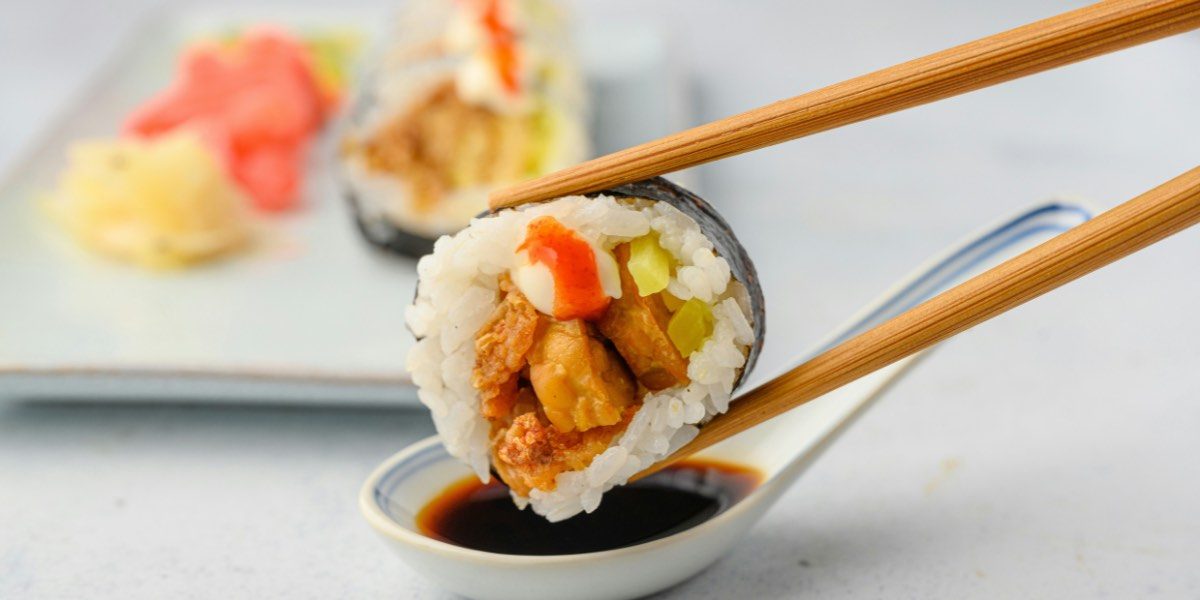Asian sauces are a central part of the culinary traditions across the continent. They add complexity, balance, and depth to dishes, offering a variety of flavors that range from savory and salty to sweet and spicy. For those new to Asian cooking, understanding the different types of sauces and how they are used can help enhance the cooking experience and better appreciate the flavors that define the cuisine.
This guide will explore some of the most common Asian sauces, explain their basic components, and discuss their uses in cooking. While the variety of sauces across different Asian regions can be extensive, there are several foundational sauces that appear regularly in many dishes, regardless of the specific culinary tradition.
Read also: Top Recovery Foods to Boost Your Muscle Repair
Soy Sauce: A Staple Ingredient
Soy sauce is perhaps the most widely recognized of all Asian sauces. It serves as a foundational element in many dishes, especially in East Asian cuisines, where it is used both as a seasoning and as a base for other sauces.
What is Soy Sauce?
Soy sauce is made through the fermentation of soybeans, wheat, salt, and a specific mold or bacteria. This process gives it a complex, salty flavor with hints of umami. There are various types of soy sauce, which differ in taste, consistency, and salt content. Two of the most common types are light soy sauce and dark soy sauce.
Types of Soy Sauce
-
Light Soy Sauce: Often thinner and saltier, light soy sauce is typically used in stir-fries, marinades, or as a condiment. It enhances the natural flavors of the dish without overpowering it.
-
Dark Soy Sauce: Dark soy sauce has a thicker consistency and a more pronounced flavor. It tends to be less salty but offers a rich, slightly sweet undertone. Dark soy sauce is often used in braises or slow-cooked dishes, adding color and depth to the food.
How is Soy Sauce Used?
Soy sauce is commonly used in stir-fries, soups, marinades, and dipping sauces. It pairs well with other savory ingredients, making it a versatile ingredient for a range of dishes. Light soy sauce is often used to season the food during cooking, while dark soy sauce might be added later for flavor enhancement or color.
Fish Sauce: A Key Flavor in Southeast Asia
Fish sauce is a vital ingredient in many Southeast Asian cuisines, including Thai, Vietnamese, and Filipino cooking. Known for its strong, salty, and somewhat pungent aroma, fish sauce adds a layer of complexity and richness to various dishes.
What is Fish Sauce?
Fish sauce is typically made by fermenting fish (often anchovies) with salt over an extended period. The result is a liquid with a strong flavor profile, ranging from salty to slightly tangy. Despite its intensity, when used correctly, fish sauce blends seamlessly into dishes, contributing depth and richness without overwhelming other flavors.
How is Fish Sauce Used?
Fish sauce is commonly used in dishes like pad Thai, pho, and spring rolls. It is often incorporated into sauces, marinades, or dressings. Fish sauce can also be a secret ingredient in soups, stews, and braises, where it adds savory undertones. The key to using fish sauce is balancing its intensity, as a little can go a long way.
Oyster Sauce: Sweet and Savory
Oyster sauce is another important component of Chinese and Southeast Asian cooking. It is known for its sweet, umami, and slightly salty flavor, which enhances the overall taste of a dish.
What is Oyster Sauce?
Oyster sauce is made from oysters, soy sauce, and sugar. It is typically thickened with cornstarch, resulting in a rich, glossy sauce. While the primary flavor is savory, the added sweetness makes it more versatile for use in both savory and slightly sweet dishes.
How is Oyster Sauce Used?
Oyster sauce is commonly used in stir-fries, especially with vegetables and meats such as chicken, beef, or pork. It can also be used in noodle dishes, providing a glossy finish and balanced flavor. It pairs well with ingredients like garlic, ginger, and sesame oil, making it a frequent component in many stir-fry sauces and marinades.
Hoisin Sauce: Sweet and Spicy
Hoisin sauce is another essential in Chinese cooking, known for its complex blend of sweet, salty, and slightly spicy flavors. It adds a unique dimension to many dishes and is commonly used in both savory and some dessert applications.
What is Hoisin Sauce?
Hoisin sauce is made from a base of soybeans, sugar, vinegar, and various spices like garlic and chili. The result is a thick, dark sauce with a balance of sweet and savory flavors, often accompanied by a mild heat.
How is Hoisin Sauce Used?
Hoisin sauce is typically used in barbecued meats, such as Peking duck or barbecued pork, and is also used in dipping sauces for dumplings, spring rolls, and buns. Its balance of sweet and spicy flavors makes it an ideal addition to stir-fries, marinades, and sauces. Hoisin sauce is often combined with other sauces like soy sauce or sesame oil to create a layered flavor profile in dishes.
Sriracha: A Popular Spicy Sauce
Sriracha sauce has become increasingly popular around the world, known for its distinctive balance of heat, sweetness, and garlic flavor. It is often used as a condiment or added to sauces to provide a spicy kick.
What is Sriracha?
Sriracha is made from chili peppers, garlic, vinegar, and sugar. The combination of these ingredients creates a sauce that is both spicy and slightly sweet, with a strong garlic flavor. While the spice level can vary, Sriracha tends to be more approachable than other chili sauces.
How is Sriracha Used?
Sriracha is commonly used as a topping for dishes like ramen, pho, and fried rice. It is also frequently incorporated into sauces for meats or seafood and is often used as a dip for spring rolls, fries, or even sandwiches. Sriracha can be added to dishes to enhance the spice level while maintaining a balance of sweetness.
Sesame Oil: A Fragrant Finish
Sesame oil is a key ingredient in many Asian kitchens, known for its nutty, fragrant flavor. It is typically used as a finishing oil to add flavor to dishes without overwhelming the other ingredients.
What is Sesame Oil?
Sesame oil is extracted from sesame seeds. There are two main types of sesame oil: light sesame oil and dark sesame oil. Light sesame oil is made from unroasted seeds and has a mild flavor, making it suitable for stir-frying or cooking. Dark sesame oil, which is made from roasted seeds, has a more intense, nutty flavor and is generally used as a finishing oil.
How is Sesame Oil Used?
Dark sesame oil is commonly used in stir-fries, dressings, and marinades. It is also added to soups, noodles, or as a topping for dumplings to give the dish a nutty flavor. Light sesame oil, on the other hand, is used for cooking at higher temperatures due to its more neutral flavor.
Tamarind Paste: Tangy and Sweet
Tamarind is an essential ingredient in many Southeast Asian dishes, valued for its tangy, slightly sweet flavor. Tamarind paste is often used to add a burst of acidity to balance out richer, sweeter, and spicier ingredients.
What is Tamarind Paste?
Tamarind paste is made from the pulp of the tamarind fruit, which has a natural tangy and citrus-like taste. The paste is often sweetened with sugar or molasses to balance its acidity, making it versatile for both savory and sweet dishes.
How is Tamarind Paste Used?
Tamarind paste is commonly used in Indian curries, Thai soups, and sauces like pad Thai. It is also a key ingredient in chutneys and marinades, adding depth and complexity to the flavor profile of various dishes. Its tanginess can complement sweet, salty, and spicy elements, contributing to a well-rounded dish.
Read also: Why Denver’s Food Scene Embraces Global Flavors
Using Asian Sauces in Your Cooking
Understanding the diverse range of Asian sauces and how they interact with other ingredients allows for a more nuanced approach to cooking. Each sauce brings its own unique flavor to dishes, whether used as a base for a marinade, a dip, or a condiment. Soy sauce, fish sauce, oyster sauce, hoisin sauce, sriracha, sesame oil, and tamarind paste each offer distinct characteristics that contribute to the layers of flavor found in Asian cuisine.
Experimenting with these sauces can enhance your cooking, providing the opportunity to explore new flavor combinations and textures. Whether you’re making a stir-fry, a soup, or a noodle dish, learning to balance these sauces and incorporate them thoughtfully can transform the experience, providing a deeper appreciation for the flavors that define Asian cuisine.








